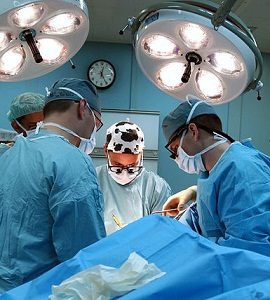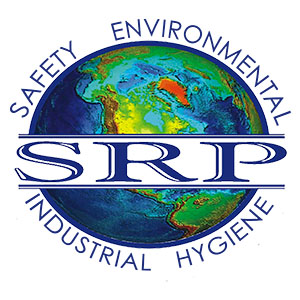Waste Anesthesia Gas Surveys
 It is estimated that more than 200,000 health care professionals –including anesthesiologists, nurse anesthetists, surgical and obstetric nurses, operating room (OR) technicians, nurses aides, surgeons, anesthesia technicians, postanesthesia care nurses, dentists, dental assistants, dental hygienists, veterinarians and their assistants, emergency room staff, and radiology department personnel –are potentially exposed to waste anesthetic gases and are at risk of occupational illness.
It is estimated that more than 200,000 health care professionals –including anesthesiologists, nurse anesthetists, surgical and obstetric nurses, operating room (OR) technicians, nurses aides, surgeons, anesthesia technicians, postanesthesia care nurses, dentists, dental assistants, dental hygienists, veterinarians and their assistants, emergency room staff, and radiology department personnel –are potentially exposed to waste anesthetic gases and are at risk of occupational illness.
Exposure measurements taken in ORs during the clinical administration of inhaled anesthetics indicate that waste gases can escape into the room air from various components of the anesthesia delivery system.
Potential leak sources include tank valves, high- and low-pressure machine connections; connections in the breathing circuit, defects in rubber and plastic tubing, hoses, reservoir bags, and ventilator bellows, and the Y-connector. In addition, selected anesthesia techniques and improper practices such as leaving gas flow control valves open and vaporizers on after use, spillage of liquid inhaled anesthetics, and poorly fitting face masks or improperly inflated tracheal tube and laryngeal mask airway cuffs also can contribute to the escape of waste anesthetic gases into the OR atmosphere.
SRP Environmental will evaluate your potential sources of Waste Anesthesia Gases and develop a sampling strategy to determine employees’ exposures. Corrective actions will be developed based on exposure monitoring results.
Ventillation Surveys
Ventilation flow rates in critical areas of medical facilities are required to be evaluated according to Guidelines for the Construction of Hospital and Healthcare Facilities. These standards have also been adopted by the American Institute of Architects and Joint Commission on the Accreditation of Hospital Organizations. SRP can conduct ventilation surveys to measure the number of air changes per hour to determine if your facility meets the ventilation guidelines.
Exposure Monitoring
The Occupational Safety and Health Administration (OSHA) requires employers to evaluate employees’ workplace exposures to potential hazards. Healthcare facilities have many chemicals that may cause adverse health effects in elevated concentrations. Common chemicals that are found in the medical settings include:

Thermometer and Laboratory Equipment
- Ethylene Oxide
-
- Ethylene oxide (EtO) is used as a sterilant for medical equipment and supplies. EtO possesses several physical and health hazards that merit special attention. EtO is both flammable and highly reactive. Acute exposures to EtO gas may result in respiratory irritation and lung injury, headache, nausea, vomiting, diarrhea, shortness of breath, and cyanosis. Chronic exposure has been associated with the occurrence of cancer, reproductive effects, mutagenic changes, neurotoxicity, and sensitization. OSHA regulates EtO under the standard 29 CFR 1910.1047.
- Formaldehyde
- Formaldehyde (Formalin) is common to the chemical industry. The National Toxicological Program’s (NTP) 12th Report on Carcinogens classifies it as “known to be a human carcinogen”. Among its uses in medical facilities as a preservative in medical laboratories, as an embalming fluid, and as a sterilizer. OSHA regulates the handling and use of Formaldehyde in its standard, 29 CFR 1910.1048.
- Xylene & Toluene
- Xylene and Toluene are common chemicals used in Histology laboratories. They are also found as ingredients in solvents and paint products. Both are highly flammable and can cause central nervous system impairment and respiratory irritation. § Mercuryo Mercury is naturally occurring and exists in several forms. High mercury exposure results in permanent nervous system and kidney damage. Mercury is commonly found in thermometers, manometers, barometers, gauges, valves, switches, batteries, and high-intensity discharge (HID) lamps. It is also used in amalgams for dentistry, preservatives, heat transfer technology, pigments, catalysts, and lubricating oils.
Hazardous Waste Management and Disposal
Hospitals and Medical Facilities generate specialized hazardous waste that requires careful characterization and management.
Pharmacy waste can also be highly toxic and requires special handling.
SRP Environmental’s Hazardous Materials Managers will assist your company with properly characterizing your wastestreams, compliance with local, state and federal regulatory agencies and coordinating the proper disposal of the waste.
Biological Safety Cabinets
A biosafety cabinet (BSC) — also called biological safety cabinet or microbiological safety cabinet — is an enclosed, ventilated laboratory workspace for safely working with materials contaminated with (or potentially contaminated with) pathogens requiring a defined biosafety level. Several different types of BSC exist, differentiated by the degree of biocontainment required. The primary purpose of a BSC is to serve as the primary means to protect the laboratory worker and the surrounding environment from pathogens. National Sanitation Foundation (NSF) Standards require testing of BSC’s to ensure proper function. The SRP Environmental Industrial Hygiene Group has experience and expertise to evaluate and perform certifications of most types and models of Biological Safety Cabinets and Laminar Flow Hoods.
Laboratory Safety
 Laboratories are regulated by OSHA’s Laboratory Safety Standard, 29 CFR 1910.1450. This regulation requires laboratories to develop and implement a Chemical Hygiene Plan which include many critical safety components such as Standard Operating Procedures for handling toxic chemicals, Fume hood evaluations, Employee information and training and special precautions for work with particularly hazardous substances.
Laboratories are regulated by OSHA’s Laboratory Safety Standard, 29 CFR 1910.1450. This regulation requires laboratories to develop and implement a Chemical Hygiene Plan which include many critical safety components such as Standard Operating Procedures for handling toxic chemicals, Fume hood evaluations, Employee information and training and special precautions for work with particularly hazardous substances.SRP Environmental’s Industrial Hygiene experts have many years of experience in the medical industry and have the skills to assist you with any or all of the requirements of the OSHA Standard.
Respirator Fit Testing
The United States Center for Disease Control and Prevention (CDC) has issued Guidance Documents for medical facilities to follow to properly protect their employees from airborne communicable diseases such as TB and H1N1 Flu. An important component of that Guidance Document is the proper selection and use of respiratory protection.
SRP Environmental will assist you in the selection, training and respirator fit testing to meet the requirements of the OSHA Respiratory Protection Standard (29 CFR 1910.134). We can conduct the Qualitative Fit Testing for any size group of employees at any location and time.
Legionella investigation
Employee exposure to Legionnaires’ Disease. Legionnaires’ Disease is a bacterial disease commonly associated with water-based aerosols and often a result of poorly maintained air conditioning cooling towers and potable water systems. It can occur where water, contaminated with the legionella organism, is aerosolized and then breathed in by workers or patients. Legionnaires’ Disease is not contagious but is of environmental origin. Consequently, only those who are directly exposed to the contaminated aerosolized water source can get the disease. SRP Environmental can conduct water sampling to determine if any of the pathogenic organisms are present as well as developing a preventive maintenance program to keep the organisms from growing.
-

 ">
">
 ">
">